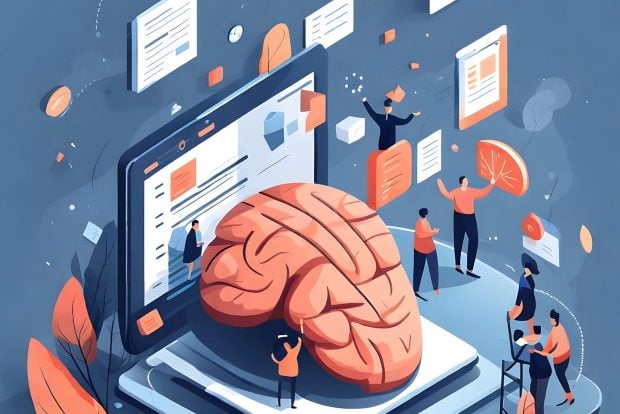One step at a time: How three countries approach innovation in government

Governments around the world are trying to innovate to drive efficiency, deliver better services and meet citizen expectations around speed and ease of use.
On a recent Global Government Forum webinar, held with knowledge partner Visa, digital leaders from Iceland, Canada and Finland shared examples of innovation from their countries as well as the major transformation challenges they still face.
Iceland is seen by many as a digital success story, rising up the digital maturity rankings from 12th place globally in 2020 to fifth place in the UN’s most recent report.
This progress dates back to 2018/19, said Birna Íris Jónsdóttir, CEO of Digital Iceland in the country’s Ministry of Finance and Economic Affairs.
“We got a clear focus on the project, followed by funding, which is obviously critical,” she said, adding that the government and politicians prioritised digital transformation and this “set the tone for the success of the project” and provided a “clear mandate for change”.
In terms of organisation, there is a small core team of around 10 to 12 people in the Ministry of Finance and Economic Affairs working on digital transformation but there is a wider ecosystem of around 250 people. “Our power is that we have a framework agreement with over 20 teams in the market, so this gives us the opportunity to move very fast,” said Jónsdóttir, noting that the strategy is to focus on projects that create the most value for users.
This emphasis also enables Iceland to move past a challenge that holds many governments back.
“We did not go into clearing all the technical debt in the legacy systems or fixing all data,” she said. “We just focused on the front end and developed core services that serve the citizens basically.”
These core services include a digital ID system that has a 95% adoption rate and a ‘digital mailbox’, which from January 2025 all government agencies will be mandated to use for official documentation and communication with residents.
Jónsdóttir said the “technical architecture of being user-centric and letting the agencies just manage their data and their legacy systems” is one of the keys to Iceland’s success.
Read more: Innovation 2025 event to showcase government transformation in action
Zero-touch services in Finland
Mikko Mattinen, director of Finland’s Digital and Population Data Services Agency, explained that “digitalisation in Finland is saturating”, meaning it is reaching a high level of maturity, with foundational elements such as basic services, essential registries and service design already in place.
The next step is eliminating unnecessary services, reducing complexity and implementing “zero touch services”, where “the end user doesn’t have to do that much: he or she just approves the thing that’s happening behind the curtain”.
Another area of innovation in Finland is on digital services based around major life events such as births, death and marriages. Mattinen also highlighted the work of the Nordic DigiGov Lab which brings together the government digital agencies from Norway, Sweden and Finland with a focus on using AI to provide seamless citizen services.
Canada upskills public servants
After losing some ground in digital rankings over the years, falling from 28th place globally in the UN’s 2020 ranking to 47th in 2024, Canada is going “back to some of the basics”, said Anna Wong, director of digital talent development, Office of the Chief Information Officer, Treasury Board of Canada Secretariat.
As part of that, Wong’s focus is on making sure Canada’s workforce of almost 300,000 public servants have basic digital skills – whatever their role is. A set of essential competencies has been defined, including cybersecurity, due diligence, data skills, and using digital tools responsibly.
“We are testing them, we have built learning interventions so that people can start upskilling,” Wong said.
However, she acknowledged that there is still a skills gap, particularly when “the longevity of a skill is less than a few months” as new technologies and practices emerge. In response, Canada launched a national training fund for IT staff, established under a collective agreement signed between the Professional Institute of the Public Service of Canada union and the Treasury Board of Canada Secretariat. It aims to support the professional development of over 20,000 IT practitioners in the Government of Canada.
Wong said that in government, transformation can seem “very overwhelming” with some large modernisation programmes stretching over a decade. She advocated thinking about transformation in “50 increments” – from small policy changes in 50 days to larger implementations over 50 months. Looking further ahead to the aspiration in 50 years is also important, even if this spans beyond some careers.
“That’s the frame I always think about when we think about transformation and innovation because it makes it more concrete, and it’s something that each of us and our teams can take home immediately,” she said.
Read more: Small businesses drive economic growth – how governments are using data to help them thrive
The art of the possible
Despite their progress, the leaders also identified several common challenges to innovation in government, from changing the culture and scaling up successful pilots to enabling data access, exchange and interoperability.
Richard Laycock, global head of government payments, Visa Government Solutions, noted that amid budget challenges, innovation can sometimes take a back seat in government. He highlighted key ways to overcome this and understand “the art of the possible”.
Collaboration is key, said Laycock, who was formerly a senior civil servant. “Governments around the world are at various stages of their transformation programmes, and I think [they] have a fantastic opportunity to tap into a wide government network and leverage where other governments are succeeding and what their secret recipe is,” he commented.
In Austria, for instance, when a child is born, parents don’t have to apply for child support separately, as the tax authorities automatically check eligibility and transfer support payments.
This, Laycock said, shows a “joined-up approach” and the value of sharing data and interoperability in government systems.
Governments can also leverage innovation from elsewhere in the public and private sectors. For instance, a recent Visa workshop explored using open banking data to automate benefits eligibility checks.
Laycock also agreed with the other panellists about the need for senior backing for transformation, arguing that the success of any digitisation or innovation effort does not hinge on the starting level of technology adoption “but on strong, visible leadership from the top, with that political will to make that change happen”.
“Don’t be limited to what you know today,” he concluded. “Technology advancements and creating public-private partnerships open up a whole new ‘art of the possible’ way of delivering new, innovative services in new ways that drive real value for government, and it’s sometimes the small changes that can have the biggest impact.”
The Next Steps for Government Innovation webinar took place on 12 November 2024. Replay the webinar in full.
The webinar is part of Global Government Forum’s content programme leading up to the Innovation conference in London in March 2025. Find out more about the event and register.




















